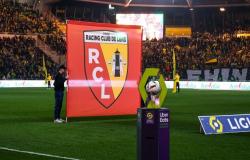Just because there’s been plenty of rain this year doesn’t mean there won’t be a shortage of drinking water in the near future. The Eau 17 union, at the end of 2022, launched a study to assess “the needs and resources for 2035 and 2050”, with a question in the background: “Can drinking water be a limiting factor for development? » The conclusions were presented to the union committee meeting in Saintes on Friday June 14.
The projections construct more or less pessimistic scenarios. On the one hand, there is a decreasing resource. In around ten years, Eau 17 is preparing to return to the conditions of the scorching vintage of 2022. That summer, “we were looking for cubic meters to fill the water towers in the morning,” remembers Hortense Bret, head of the heritage and perspective center. The union, however, managed to overcome the obstacle.
Philippe Ménard/SO
Christophe Sueur and Didier Minot, president and director of Eau 17, announce the launch of a working group to work on solutions.
In twenty-five years, the challenge is greater. The EPTB (territorial public establishment of the basin) of the Charente river plans to reduce withdrawals by 20 to 40%, while the river remains an essential tap. Catch fields close to the coast risk becoming salinized, which is called “salt wedges”. At the same time, when it is hotter, water consumption increases…
Catch fields close to the coast risk becoming salinized, what we call “salt wedges”
Effort personnel
The study distinguishes three sectors. The most at risk is the “coastal system”. In 2035, the calculations result in an available resource located between +6,300 m³ per day, at best, and -300 m³ per day, at worst. In 2050, all scenarios are in deficit, between -10,000 and -24,000 m³/day. For the Cara area (Royan Atlantique agglomeration community), the balance is positive in 2035 (between +18,000 and +11,400 m³ available per day), but very fragile in 2050 (from +3,800 m³ at best to -6,700 m³ at worst). The “interior” sector remains positive (+56,000 m³/day) in all scenarios.
The union wants to be reassuring. According to him, it is possible to achieve a global balance, if “global hypotheses come to fruition”. This requires “controlling demographic growth” and “containing tourist numbers”, since we have to digest what we call “the August 15 peak”. We must also encourage the population to reduce their personal consumption.
The cost of technology
There are other settings. The quality of the water, which must not be impaired by pesticide residues. The solidity of networks, to limit leaks. We can also think about technological solutions: desalination of salt water, reuse of wastewater for specific uses, transfer of water from better-off areas (the south of the department, even the Dordogne), but each has a cost, and effectiveness remains to be proven.
“There is also what we do in terms of exporting and selling water to cities and towns which consume thousands of m³ which we will miss in the end,” adds the president, Christophe Sueur. He reminds once again that he will favor his members in the agglomeration of La Rochelle, who left Eau 17, if the resource dries up.






